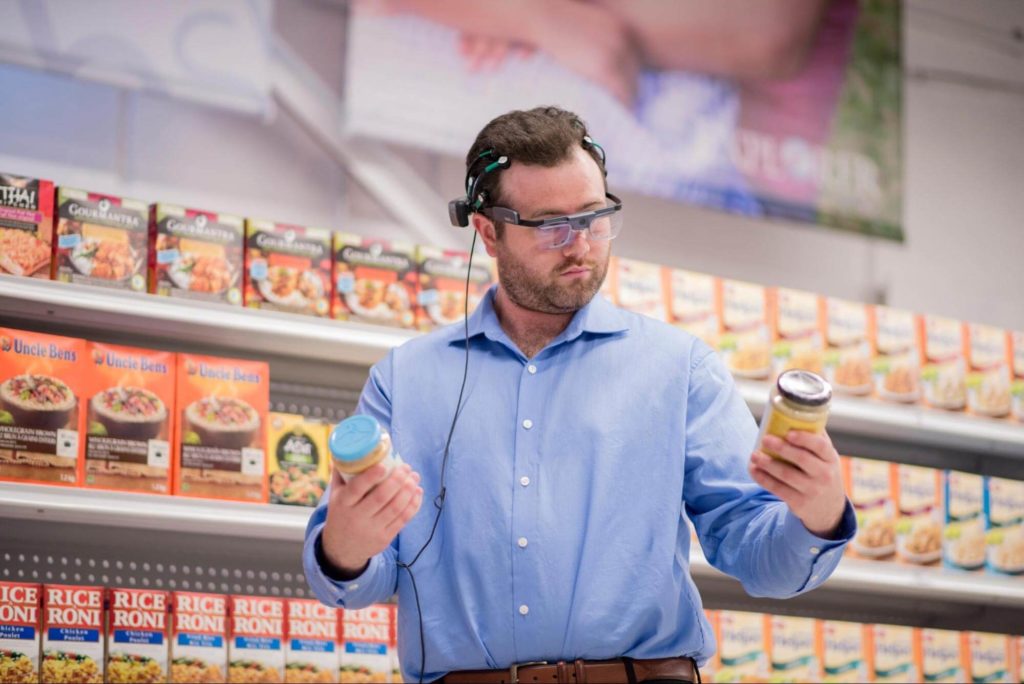Chapter 4:
Common Mistakes In Package Design Testing
Packaging is often a forgotten element or considered a less important element than other forms of communication. Conducting no package design testing or relying on boardroom decisions for design can result in costly mistakes! But, once the decision to do product package design testing is made, there are several pitfalls to avoid.
1. Don’t let the consumer become your package designer!
This happens when you rely on focus groups or only qualitative research to direct your design. While the right qualitative research plays an important role in developing understanding and gaining design input, it should never be your sole source.
2. Go beyond traditional package design testing techniques.
Marketers have historically relied on qualitative or quantitative questionnaires to test packaging. The problem with these approaches is that respondents are not a reliable source when it comes to remembering and describing their own behavior. People tend to give a rational explanation as to why they made a choice when in fact there are other subconscious factors influencing decisions that they are not even aware of.
Combining rational with sub-conscious decision making is the most powerful way to gain needed insights. This doesn’t necessarily mean multiple research studies, increased cost and extended timeframes. Studies can be designed to extract various data from one study, such as follow up in-depths with a sub-set of respondents.
3. Test in the shopper or usage environment.
One of the biggest mistakes that can be made in packaging research is failing to test in a real life situation. It can lead to decisions that will result in packaging that fails to meet the business goal. To ensure strong packaging insights, it is critical to test in situation to measure real behavior. Taking distractions, shopper mindset, competitive environment, etc. into consideration is the only way to make a confident decision.
The science of packaging has been studied for decades and there certainly is a lot more to learn. Your Packaging Agency also has experience in how packaging works. However, all shoppers and consumer target groups behave differently depending on the category, the channel, competitive environment and the usage situation. Without the reality of actually observing and understanding consumer input, you risk making costly mistakes.

Package Design Testing Done Right
There are general design keys to getting the most out of any marketing research conducted including design elements, sample and correct interpretation of results. The following guidelines go beyond these and will help you get the best return on your investment.
Have clearly stated business goals and research objectives.
n general, insights in market research, including packaging research, can be nice to know, not need to know. This is usually the result of not having clear business goals or research objectives. This results in insights that are either not actionable or not relevant to the business needs.
Go beyond facts and data.
Another common reason for not getting the most from your research is the inability to translate facts or data into true insights. Consumers cannot give you insights. It requires experienced market researchers to interpret the learning and get to true insights and recommendations.

Have benchmarks for comparison.
It is impossible to determine whether the package design is optimal or sub-optimal if tested in isolation. Comparing to the current package or competition are key to assessing performance. It is also valuable to test versus norms that your research agency can provide.

Conduct research in real life situations.
Consider where purchase occurs, whether it is most often in traditional channels, fast food, vending machines, cinema, on-line, etc. or a combination. Also, consider usage behavior. Is the category consumed in or out of home; alone or shared as examples. This will guide you in terms of what and how to measure and, importantly, where.

Combine traditional research techniques with more advanced techniques.
Consumers are not always able to accurately describe why they do things, especially beyond superficial functional reasons. Be sure to combine techniques to gain insight into sub-conscious triggers, barriers and motivators rather than just relying on what consumers say. This will result in richer insights and more relevant actions.
Leading Research Companies will ensure they have an up to date understanding and expertise in all of these techniques before recommending a research approach. They will also have a clear understanding of your business needs and goals.
In chapter 5 we’ll look at how to present package design research in a clear and credible way.

